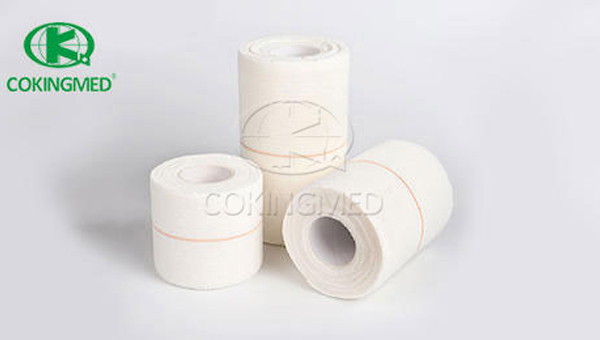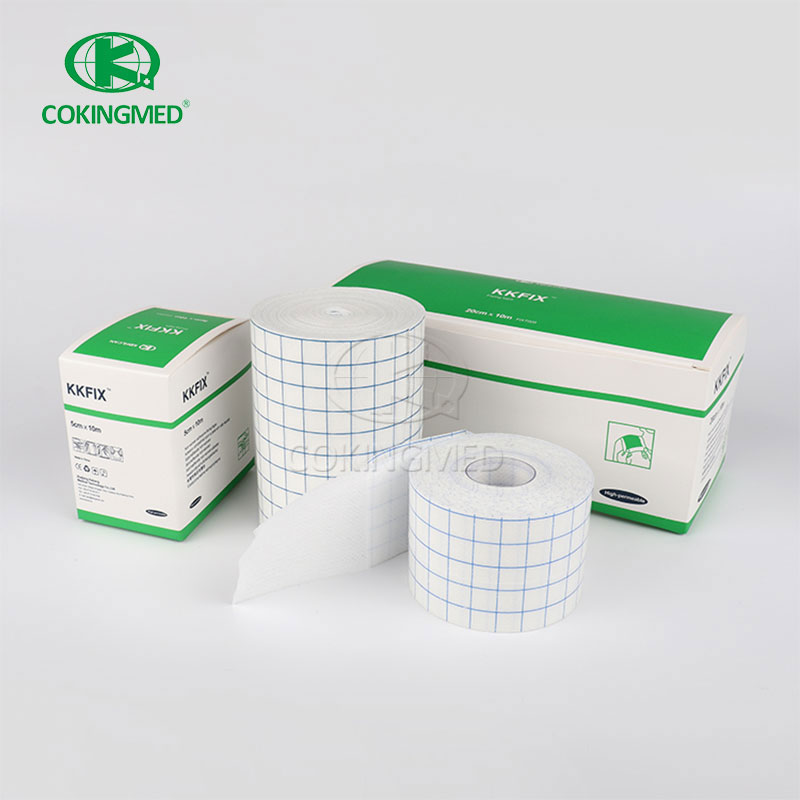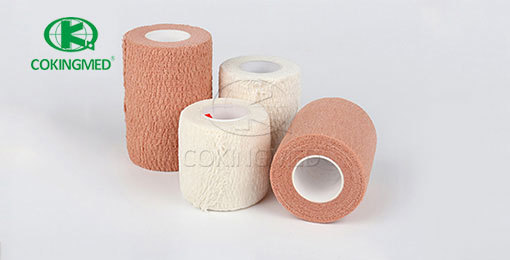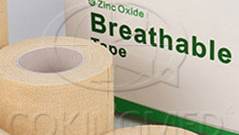Differences Between Elastic Adhesive Bandage and Ordinary Bandage In the field of
In the field of first - aid and medical care, bandages are essential items. Among them, elastic adhesive bandages and ordinary bandages are two commonly used types, but they have several distinct differences in various aspects.

Elasticity
Elastic Adhesive Bandage:As the name implies, an elastic adhesive bandage has excellent elasticity. It is usually made from elastic materials such as latex or elastic fibers. This elasticity allows it to stretch and conform to the body's movements. For example, when used on joints like the knee or elbow, it can stretch as the joint bends and contracts, providing continuous support without restricting movement. Athletes often use elastic adhesive bandages to support their muscles and joints during sports activities. The elastic property helps to reduce the risk of injury by absorbing shock and maintaining the stability of the joints.
Ordinary Bandage:Ordinary bandages generally have little to no elasticity. They are typically made of non - elastic materials like cotton or gauze. Once wrapped around a body part, they remain in a fixed position and do not adapt well to the body's natural movements. For instance, if an ordinary bandage is used to wrap a wrist, it may become too tight or too loose when the wrist moves, which can be uncomfortable and may not provide effective support.
Adhesion
Elastic Adhesive Bandage:Elastic adhesive bandages are self - adhesive. They have an adhesive layer on one side that allows them to stick to the skin or to themselves. This adhesive property makes the application process more convenient. You don't need additional clips or tapes to secure the bandage in place. However, the adhesive strength is carefully balanced to ensure that it sticks well during use but can be easily removed without causing excessive pain or damage to the skin.
Ordinary Bandage:Ordinary bandages usually do not have an adhesive property. They need to be secured with clips, pins, or additional tapes. For example, a gauze bandage wrapped around a wound needs to be fixed with medical tape at the ends. This can be a bit more cumbersome during the application process, and there is also a risk that the securing elements may come loose during movement.
Material Composition
Elastic Adhesive Bandage:Besides elastic materials, elastic adhesive bandages may also contain other components. The adhesive part often consists of synthetic adhesives, which are designed to be skin - friendly while maintaining good adhesion. Some elastic adhesive bandages may also have a breathable layer to prevent skin irritation caused by sweating. For example, some high - quality elastic adhesive bandages are made with a blend of latex, polyester, and a special medical - grade adhesive.
Ordinary Bandage:Ordinary bandages are mainly composed of natural materials like cotton or gauze. Cotton bandages are soft and absorbent, which is beneficial for wound care as they can absorb exudates from the wound. Gauze bandages are lightweight and porous, allowing air to circulate around the wound, which helps in the healing process.
Application Scenarios
Elastic Adhesive Bandage:Due to its elasticity and adhesion, elastic adhesive bandages are often used for sports injuries, sprains, and strains. They can provide support to injured muscles and joints during the recovery process. They are also suitable for use in rehabilitation therapy, where the patient needs to move the affected limb while still receiving support. For example, a person recovering from a knee sprain may use an elastic adhesive bandage to support the knee joint during physical therapy exercises.
Ordinary Bandage:Ordinary bandages are more commonly used for general wound dressing. They are suitable for covering cuts, abrasions, and surgical wounds. Their non - elastic and absorbent nature makes them ideal for protecting the wound from external contamination and absorbing any blood or fluids oozing from the wound. For instance, after a minor surgical procedure, a gauze bandage is often used to cover the incision site.
Usage Method
Elastic Adhesive Bandage:When applying an elastic adhesive bandage, it is important to stretch it slightly while wrapping to ensure proper support. Start from the distal end of the limb and wrap in a spiral pattern, overlapping each layer slightly. The self - adhesive property allows for easy adjustment during the wrapping process. However, care should be taken not to wrap it too tightly, as this can cause circulatory problems.
Ordinary Bandage:Applying an ordinary bandage requires more steps. First, the bandage needs to be wrapped around the wound or body part, and then it must be secured with clips or tapes. The wrapping should be even to ensure uniform pressure distribution. If the bandage is used for a wound, it may need to be changed more frequently due to its absorbent nature and lack of adhesive to keep it in place.
In conclusion, elastic adhesive bandages and ordinary bandages have their own unique characteristics and are suitable for different situations. Understanding these differences can help users choose the most appropriate bandage for their specific needs, whether it's for sports - related injuries, general wound care, or rehabilitation purposes.







